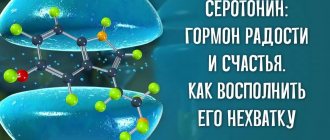Primary hyperaldosteronism is a hormonal dysfunction that was studied and described in detail in the mid-twentieth century by the American endocrinologist Jerome Conn. Conn's syndrome has a specific pathogenesis and is accompanied by characteristic endocrine and biochemical disorders.
The main diagnostic sign is a surplus of the hormone aldosterone. This allows you to exclude other diseases with similar external manifestations. In particular, from secondary hyperaldosteronism, which developed against the background of certain pathologies of the heart, liver, kidneys, as a side effect of certain medications.
Conn's syndrome is diagnosed extremely rarely. The amount of accumulated statistical information does not yet allow us to draw conclusions about its prevalence in the human population. However, some scientists believe that drug-resistant hypertension is an indirect sign of excess aldosterone production. If this theory is confirmed, then the actual number of patients with Conn's syndrome may be significantly higher than previously thought.
1.General information
Conn's syndrome, or primary hyperaldosteronism, is a disease that first received a detailed and reasoned clinical description relatively recently, in 1955 (J. Conn, USA). This syndrome really has a clearly defined etiopathogenetic specificity and is characterized by a number of endocrine and biochemical changes (in particular, excessive secretion of the hormone aldosterone), which allows specialists to confidently differentiate it from symptomatically related conditions, primarily from secondary hyperaldosteronism, which can develop as a complication of a number of cardiovascular, kidney, liver diseases, or as a side effect of treatment for such diseases.
Primary hyperaldosteronism until recently was considered a rare disease, and there are still no accurate and reliable epidemiological data. Today, many authors raise the question that therapeutically resistant arterial hypertension in some cases may be associated precisely with primary hyperaldosteronism, i.e. the actual prevalence of this syndrome may be much higher than previously thought.
A must read! Help with treatment and hospitalization!
Forecast
For aldosterone-producing adenoma, surgical treatment brings recovery in 50-60% of cases. The prognosis is favorable if the operation is performed in a timely manner before the onset of irreversible changes in the cardiovascular system and kidneys. The criteria for the effectiveness of the operation are considered to be normalization of blood pressure (or its control with a small dose of antihypertensive drugs), potassium, aldosterone and renin levels, and the absence of tumor recurrence. With hyperaldosteronism that has developed against the background of diffuse hyperplasia of the adrenal cortex, it is not possible to achieve recovery. To achieve remission, the patient requires constant use of spironolactones, and in some patients, steroidogenesis inhibitors.
The prognosis of secondary hyperaldosteronism depends on the severity of the specific disease against which it developed and its treatment. Thus, treatment of liver cirrhosis and chronic heart failure is sometimes difficult and must be carried out constantly to compensate for these conditions. The prognosis for Bartter syndrome is serious. Without lifelong treatment and correction of electrolyte imbalances from an early age, death is possible due to dehydration, hypokalemia (cardiac arrest) and secondary infections.
In childhood, there is a progression of Bartter's syndrome and the development of tubulointerstitial nephritis , against the background of hypokalemia and increased renin levels, with impaired renal function up to renal failure. Continuous treatment with indomethacin and potassium supplements improves the prognosis. With adequate therapy, children develop, grow, and are seen by a nephrologist as adults.
2. Reasons
Aldosterone is one of the hormones produced by the adrenal glands. Like other hormones, aldosterone is involved in the simultaneous regulation of several physiological processes: in particular, its main functions include maintaining normal blood pressure, acid-base and water-salt balance (the required concentration of sodium and potassium ions). In the strict original meaning of the term, Conn's syndrome is caused by a hormone-producing tumor of the adrenal glands, the secretory activity of which leads to abnormally high aldosterone levels. The work of J. Conn is based on a cause-and-effect relationship between the removal of such a benign tumor (aldosteroma), on the one hand, and, on the other, the subsequent normalization of a number of indicators in operated patients.
Currently, to primary hyperaldosteronism, i.e. Conn's syndrome includes not only those symptom complexes that are caused by benign tumor processes in the adrenal glands. A similar clinical picture can also be given by hyperplasia (i.e. non-oncological growth, enlargement of the adrenal glands in size, which is detected in approximately half of all cases), adrenal cancer (detected in less than 1% of cases), genetically determined hyperproduction of aldosterone by both adrenal glands (also about 1% of all cases of primary aldosteronism).
Visit our Endocrinology page
Diagnosis of Conn's syndrome
Stages of diagnosing Conn's syndrome, establishing the type of adrenal lesion and choosing treatment tactics
Diagnosis of Conn's syndrome in people with arterial hypertension consists of several stages:
- identification of primary aldosteronism itself, for which they use the study of blood and urine electrolytes, screening tests (primarily, determination of the aldosterone-renin ratio) and verification tests (with a sodium load, captopril, etc.);
- establishing the type of adrenal gland lesion - uni- or bilateral (CT and separate study of the aldosterone content in the blood of each of the adrenal veins).
Detection of Conn's syndrome itself
Blood potassium and sodium levels are routine laboratory tests for hypertension. The detection of hypokalemia and hypernatremia already at the initial stage of the diagnostic search suggests the presence of Conn's syndrome. Diagnosis of primary aldosteronism is not very difficult in patients with a detailed picture of Conn's syndrome (primarily with clear hypokalemia not associated with other causes). However, over the past two decades, there has been a frequent possibility of primary aldosteronism among individuals with normokalemia. Taking this into account, it is considered necessary to conduct additional studies to exclude Conn's syndrome in a fairly wide category of patients with arterial hypertension:
- at a blood pressure level >160/100 mm Hg. Art. (and, especially, >180/110 mm Hg and hypertensive crisis);
- with resistant arterial hypertension;
- in persons with hypokalemia (both spontaneous and induced by the use of a diuretic, especially if it persists after taking potassium supplements);
- for arterial hypertension in persons with an increase in the size of the adrenal gland according to instrumental studies (adrenal incidentaloma; however, it has been shown that only ~1% of cases of all adrenal incidentalomas are the cause of primary aldosteronism).
Assessing the excretion of electrolytes (potassium and sodium) in urine
This study occupies a fairly important place in diagnosing the causes of hypokalemia. Potassium and sodium levels are tested in urine collected over a 24-hour period from a patient who is not receiving potassium supplements and who has abstained from taking any diuretics for at least 3-4 days. If sodium excretion exceeds 100 mmol/day (this is the level at which the degree of potassium loss can be clearly assessed), a potassium excretion level >30 mmol/day indicates hyperkaliuria. Along with primary aldosteronism, increased potassium excretion may be due to a number of reasons.
Causes of hypokalemia associated with increased excretion of potassium by the kidneys:
- Increased potassium excretion by the nephron collecting duct: increased sodium excretion (eg, when taking a diuretic)
- increased urine osmolarity (glucose, urea, mannitol)
- with increased intravascular blood volume (low plasma renin): primary aldosteronism
- Bartter syndrome
Once it has been established that the cause of the patient's hypokalemia is an increase in potassium excretion in the urine, it is considered advisable to attempt to correct the hypokalemia. In the absence of contraindications, potassium supplements are prescribed (potassium 40-80 mmol/day), and diuretics are discontinued. It may take from 3 weeks to several months to restore potassium deficiency after prolonged use of diuretics. After this period, potassium supplements are discontinued and blood potassium testing is repeated >3 days after discontinuation. If blood potassium levels return to normal, plasma renin and aldosterone levels should be re-evaluated.
Aldosterone-renin ratio assessment
This test is currently considered as the main screening method in the diagnosis of Conn's syndrome. Normal values for aldosterone levels when drawing blood with the patient in the supine position are 5-12 ng/dl (in SI units - 180-450 pmol/l), plasma renin activity is 1-3 ng/ml/h, aldosterone-renin ratio is up to 30 (in SI units - up to 750). It is important to note that the normal indicator values given are only approximate values; for each specific laboratory (and for specific laboratory kits) they may differ (comparison with indicators in healthy individuals and in individuals with essential arterial hypertension is required). Taking into account such insufficient standardization of the method, one can agree with the opinion that when interpreting the results of assessing the aldosterone-renin ratio, “flexibility of judgment is required from the clinician.” Below are the main recommendations for assessing the aldosterone-renin ratio.
Recommendations for assessing the aldosterone-renin ratio
Patient preparation:
- Correction of hypokalemia if present.
- Liberalization of table salt intake.
- Discontinuation for at least 4 weeks of drugs that increase renin levels and decrease aldosterone concentrations, which causes false results: spironolactone, eplerenone, amiloride, triamterene;
- products containing licorice.
- Discontinuing for at least 2 weeks other drugs that may affect the test result:
β-AB, central α2-agonists (clonidine), NSAIDs (reduce renin levels);
- ACE inhibitors, sartans, direct renin inhibitors, dihydropyridine calcium channel blockers (increase renin levels, reduce aldosterone levels).
If it is impossible to discontinue these medications in patients with stage 3 arterial hypertension, it is permissible to continue taking them with mandatory discontinuation of spironolactone, eplerenone, triamterene and amiloride for at least 6 weeks before the study.
- Cancellation of estrogen-containing drugs.
Conditions for blood sampling:
- Blood should be collected in the middle of the morning, approximately 2 hours after the patient wakes up and gets out of bed. Immediately before blood collection, the patient should sit for 5-15 minutes.
- Blood must be collected carefully, avoiding stasis and hemolysis.
- Before centrifugation, the blood sample should be at room temperature (not on ice, which will facilitate the conversion of inactive renin to active); After centrifugation, plasma should be quickly frozen.
Factors to consider when interpreting results
- Age (in persons over 65 years of age, there is a greater age-related decrease in renin compared to aldosterone).
- Time of day, recent dietary pattern, body position, length of stay in this position.
- Medicines taken.
- Details of the blood sample collection, including any difficulties encountered.
- Blood potassium levels.
- Decreased renal function (there may be an increase in aldosterone due to hyperkalemia and a decrease in renin secretion).
The Kaplan NM recommendation seems important from a practical point of view:
“Recommendations for assessing the aldosterone-renin ratio should be followed as closely as possible. Next, the levels of aldosterone and plasma renin activity should be assessed separately, without yet calculating the relationship between them. If the plasma renin activity value is clearly low (<0.5 ng/ml/h) and the plasma aldosterone level is clearly elevated (>15 mg/dl), then it is advisable to repeat this measurement again. If low plasma renin activity and high aldosterone levels are confirmed, verification tests should be performed.”
Studying the aldosterone-renin ratio, as well as conducting all further studies, requires discussing their purpose with the patient; A diagnostic search (with a cost of time and money) should be planned taking into account the patient’s readiness and desire to undergo a laparoscopic adrenalectomy in the future if an adrenal adenoma is detected.
Verification test - captopril test
Plasma aldosterone levels are assessed before and 3 hours after oral administration of captopril at a dose of 1 mg/kg body weight of the subject (in healthy people and in patients with essential and renovascular hypertension, aldosterone levels clearly decrease, but in Conn’s syndrome this does not happen). A normal response is considered to be a decrease in aldosterone levels by >30% of baseline values.
3.Symptoms
The classic symptoms of primary aldosteronism include a persistent increase in blood pressure in combination with a deficiency of potassium in the blood and a relative lack of calcium. Patients complain of fatigue, headaches and heart pain, cramps and numbness in various muscle groups. In many cases, there is polydipsia and polyuria (respectively, constant unquenchable thirst and increased volume of urination), symptoms characteristic of nephrogenic diabetes insipidus, which in this case develops as a severe complication of the kidneys.
Diagnosis and differentiation from similar diseases may require a thorough and lengthy examination, both laboratory and instrumental. In particular, if a familial form is suspected, complex genetic tests (PCR) are prescribed; in more typical cases, various stress tests, daily urine tests, and biochemical blood tests are performed. The condition of the adrenal glands (shape, size, histological homogeneity, etc.) is examined using tomographic methods, ultrasound, scintigraphy; If diagnostically necessary, contrast angiographic studies may be prescribed in combination with an analysis of the hormonal pattern in the blood of the adrenal veins.
About our clinic Chistye Prudy metro station Medintercom page!
List of sources
- Lukyanchikov V., Kalinin A., Garagezova A. Aldosteronism // Doctor's notes (supplement to the Medical newspaper). 2000, No. 64, 6.9.
- Dedov I. I., Melnichenko G. A., Fadeev V. F. Endocrinology. M.: GEOTAR-Media, 2007. 432 p.
- Melnichenko G. A., Platonova N. M., Beltsevich D. G., Yukina M. Yu., Molashenko N. V., Troshina E. A. Primary hyperaldosteronism: diagnosis and treatment. A new look at the problem. Based on materials from the Draft Clinical Guidelines of the Russian Association of Endocrinologists for the diagnosis and treatment of primary hyperaldosteronism // Consilium Medicum. 2021, No. 4, p. 75–85.
- Rogal E.Yu., Beltsevich D.G., Fadeev V.V. Diagnosis of primary hyperaldosteronism // Problems of endocrinology. 2010. No. 2. pp. 47–52.
- Podzolkov V.I., Rodionov A.V. Primary hyperaldosteronism: diagnosis and treatment // Arterial hypertension. 2004. No. 10 (2). pp. 109–114.
4.Treatment
Obviously, the therapeutic strategy in each case is determined by the diagnosed causes of hyperaldosteronism. Thus, for unilateral aldosteroma, the method of choice is laparoscopic adrenalectomy; The effectiveness of surgical intervention in this case is very high - in almost all patients, blood pressure and other aldosterone-related indicators gradually normalize.
In other cases, conservative treatment may be preferable, the main goal of which is to prevent severe complications caused by hypertension and hypokalemia. Special potassium-sparing drugs, antihypertensive drugs, ACE inhibitors, and a special diet are prescribed. In some cases, hormonal therapy (dexamethasone, hydrocortisone) is indicated and effective. Necessary measures are also the normalization of body weight and therapeutic exercises in the air.
Pituitary gland examination procedures
The most important method for examining the pituitary gland is magnetic resonance imaging or MRI. It can show tumors up to 2 mm in size. But if the cause of the disease is the pituitary gland, sometimes it is not possible to detect the tumor on an MRI image. Typically, pituitary tumors that cause Cushing's disease are very small.
If the cause is not in the pituitary gland, then other organs must be examined using computed tomography or magnetic resonance imaging.
Treatment Options
- Operation. The treatment of choice for pituitary tumors causing Cushing's disease is surgical removal of the tumor. This is usually done using a minimally invasive procedure called transsphenoidal pituitary surgery. This operation should be performed by a neurosurgery specialist specializing in pituitary surgery.
- Radiation therapy. If surgery on the pituitary gland does not cure Cushing's disease, and a second operation is not promising or is also unsuccessful, then radiation to the pituitary gland may be useful. This often results in a drop in hormone production several years after radiation, but in the long term it may be a reasonable option. Because of the long period between exposure and the onset of action, temporary additional treatment with drugs that suppress cortisol production may be required. Just like surgery, radiation can cause long-term failure of one or more functions of the pituitary gland—pituitary insufficiency.
- Medical therapy. Cushing's disease can be treated temporarily with medications in preparation for surgery or in case of failure. In recent years, many drugs have been approved for this purpose: ketoconazole, metyrapone, osilodrostat, pasireotide. So the choice can be tailored to the patient's needs.
- Bilateral removal of the adrenal glands - adrenalectomy. If none of the methods described help control the overproduction of the hormone, it is sometimes useful and necessary to remove both adrenal glands. If the adrenal glands are removed, they can no longer produce too much cortisol. However, this also means that lifelong hormone replacement therapy is then required to compensate for the completely absent adrenal function. This is usually achieved by taking hydrocortisone and fludrocortisone.
Aftercare
After successful surgery, it takes a long time to restore normal function of the pituitary and adrenal glands, usually months and sometimes several years. Until then, it is often necessary to replace cortisol in pill form with hydrocortisone. The transition from excess cortisol to normal levels of cortisol in the blood is often perceived by patients as a lack of cortisol. It may take months for the body to adjust to the new balance, and during this time the patient must adjust to headaches, body aches, fatigue and exhaustion. However, in the long term, curing Cushing's disease means returning to normal life.
Clinical picture
Pain appears at the very beginning of the disease. It is concentrated in the lumbar and sacral region, and is remotely felt in the leg on the side of the injury, the groin area. The patient experiences hypersensitivity and poor tactile sensations in terms of painful sensations. When coughing and sneezing, the pain increases significantly, and decreases in a semi-sitting position. A decrease in sensitivity, felt as numbness, indicates increasing hypoesthesia.
Complaints of rapid fatigue while walking and lethargy of the muscles of the lower extremities are signs of motor dysfunction. The more active the pathological process becomes, the more severe the symptoms, and the damage is distributed to the other side of the body. Over time, independent walking becomes difficult.
Disruption of the innervation of the external genitalia leads to a significant decrease in their sensitivity. This, in turn, causes anorgasmia in women and erectile disorders in men. The pelvic organs react with urinary retention and persistent constipation to sensory impairment. Patients are not aware of fullness of the bladder and rectum.
Pathogenesis of the disease
The lumbar and sacral nerves, which are part of the structure of the cauda equina, provide innervation to the lower extremities, bladder, external genitalia, urethra, and rectal sphincter.
At the onset of the disease, a violation of their functionality determines irritation and increased excitation of nerve endings, with the presence of severe pain. The more the destruction or compression of nerve endings progresses, the more innervating functions are inhibited, sensitivity decreases, and muscle paresis occurs. Neoplasia, which is malignant in nature, destroys the membranes of the spinal canal and provokes metastases.








